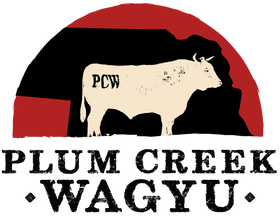Wagyu beef is now synonymous with luxury, renowned for its exquisite marbling, tenderness, and deep flavor. However, the journey of Wagyu cattle from their origins in Japan to becoming a global symbol of fine dining is a rich and fascinating story that spans centuries. From ancient farming practices in Japan to today's worldwide appeal, Wagyu beef has captured the hearts (and taste buds) of food lovers everywhere.
Ancient Beginnings: The Roots of Wagyu in Japan
Wagyu cattle have a long history in Japan, dating back over 2,000 years. Originally used as draft animals in agriculture, these cattle were prized for their strength and endurance. However, their significance shifted in the early 1800s when Japan began selective breeding practices to improve meat quality. The name "Wagyu" itself translates to "Japanese cow" ("wa" means Japan and "gyu" means cow), and over time, farmers perfected methods to create the distinctive marbling and tenderness for which Wagyu is known today.
Isolation and Preservation of Wagyu Breeds
Japan's strict isolationist policies during the Edo period (1603–1868) kept the country's cattle breeds pure. This period of isolation helped preserve the genetic integrity of Wagyu cattle, laying the foundation for the highly prized beef we know today. Four main Wagyu breeds emerged: Japanese Black, Japanese Brown, Japanese Shorthorn, and Japanese Polled. Among these, Japanese Black is the most common and produces the famous beef that is now exported globally.
The Opening of Japan: Wagyu Goes Global
In 1868, with the end of Japan's isolation during the Meiji Restoration, foreign cattle breeds were introduced to Japan, and crossbreeding became common. However, in the 20th century, Japan recognized the superior qualities of their native breeds and imposed regulations to maintain pure Wagyu bloodlines. By the mid-20th century, Wagyu cattle had become a prized delicacy in Japan, but it wasn't until the 1970s that the first Wagyu cattle were exported to other countries.
Wagyu’s Arrival in the United States
The first Wagyu cattle arrived in the United States in the late 1970s, sparking interest among American ranchers and chefs alike. While the initial exports were limited, the demand for this unique beef steadily grew. American breeders soon began to cultivate their own herds, using a combination of Japanese breeding techniques and local agricultural practices. This led to the creation of "American Wagyu," a hybrid breed known for its tenderness and marbling, though with slightly different characteristics than pure Japanese Wagyu.
A Global Icon of Luxury Beef
Today, Wagyu beef is enjoyed in fine dining establishments around the world, from New York to Tokyo to Paris. It has become the gold standard for premium beef, celebrated for its delicate flavor, buttery texture, and melt-in-your-mouth tenderness. Wagyu beef's global appeal is fueled by its unique production methods, with cattle often raised with the utmost care—receiving specialized diets and stress-free environments to ensure top-quality meat.
Whether you’re enjoying A5-grade Japanese Wagyu or a premium cut of American Wagyu, each bite is the culmination of centuries of breeding, farming, and culinary expertise. What began as a prized asset in Japanese agriculture has now become a worldwide phenomenon, representing the pinnacle of beef production and gourmet dining.
The Future of Wagyu Beef
As demand for Wagyu beef continues to grow, ranchers across the globe are working to maintain the high standards that have made Wagyu so desirable. New markets are emerging, and the global fascination with Wagyu shows no signs of slowing down. The meticulous care taken in raising these cattle, combined with their rich genetic heritage, ensures that Wagyu beef will remain a symbol of luxury and refinement for years to come.
The journey of Wagyu cattle from Japan to the world is a testament to the dedication of farmers, breeders, and chefs who have kept the tradition alive. Today, as you savor a tender cut of Wagyu, you’re experiencing a product that has crossed continents and cultures, bringing the taste of Japan’s finest to tables around the globe.
Related Posts
How We Select and Age Our Wagyu Beef for Optimal Flavor
Learn about the process of selecting and aging Wagyu beef at Plum Creek Wagyu. Discover the differences between dry-aging and wet-aging and how each method enhances the flavor and tenderness of our premium Wagyu cuts.
How We Select and Age Our Wagyu Beef for Optimal Flavor
Learn about the process of selecting and aging Wagyu beef at Plum Creek Wagyu. Discover the differences between dry-aging and wet-aging and how each method enhances the flavor and tenderness of our premium Wagyu cuts.
Sustainable Ranching at Plum Creek Wagyu: Our Eco-Friendly Practices
Discover Plum Creek Wagyu’s commitment to sustainability and eco-friendly ranching practices. Learn about our efforts in land stewardship, water conservation, and reducing our carbon footprint to produce premium Wagyu beef responsibly.
Behind-the-Scenes at Plum Creek Wagyu: From Pasture to Plate
Discover the life cycle of a Plum Creek Wagyu cow, from birth to plate. Learn about the care, feeding, and stress-free environment that contributes to the exceptional quality of our Wagyu beef.
Wagyu Beef vs. Kobe Beef: What’s the Difference?
Curious about the difference between Wagyu and Kobe beef? Learn how these two premium beef types differ in terms of origin, quality, and flavor, and discover why Kobe beef is considered the gold standard of luxury dining.
The Science Behind Wagyu Marbling: Why It’s So Special
What makes Wagyu beef so incredibly tender and flavorful? The secret lies in its marbling. Discover the science behind Wagyu’s signature fat distribution and why it creates the ultimate steak experience.







